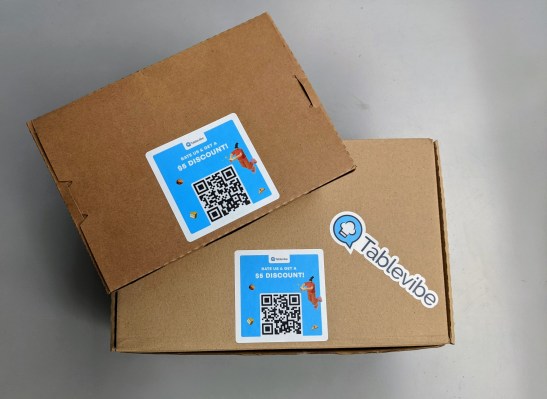
Technology
Food delivery services offer convenience to customers but also a host headaches for restaurants. Commissions as high as 40% are not uncommon and there is little in the way of tools to build customer loyalty. Tablevibe is based in Singapore and aims to reduce the dependence on third-party delivery services and increase their return customers and direct orders. This startup is part of Y Combinator’s current batch. It will host its Demo Day at end of the month.
Tablevibe’s founder team is made up of two former Googlers. Jeroen Rutten was formerly the head of Google Search in APAC’s product strategy, and Sneep was responsible for the company’s app development strategy and large sales teams. Guido Caldara is the chief technology officer at Tablevibe and a teacher at Le Wagon’s coding bootcamp.
The idea for Tablevibe was born after Rutten (its chief executive officer) visited a Singapore restaurant that relied on paper feedback forms.
“He said that if they use paper feedback forms, it creates a lot more hassle than entering all the data in an Excel spreadsheet. “How is the restaurant owner going get actionable feedback from customers based on data in an Excel sheet ?”
?
The team began working on the first version of Tablevibe, with simple Google Forms for dine-in customers and Google Data Studio dashboards, and tested it with three restaurants a few months before COVID-19 emerged. The team discovered that Tablevibe was more effective than paper forms for increasing response rates. They also found it to be more beneficial in creating repeat customers.
The pandemic struck and restaurants had to make a sudden shift to delivery. While the team retained the same concept behind their feedback forms they started using QR codes attached to takeout containers. Customers can scan the QR codes and fill out surveys. However, the customer cannot redeem the free or discounted item through third-party delivery apps. Only direct orders to the restaurant are eligible for the discount.
Restaurants have the ability to customize surveys. However, 80% can use Tablevibe’s templates to create quick surveys. Most questions only ask for a rating between one and five stars. Customers also have an option to leave their opinions. For dine-in, customers fill in their names and email addresses and then rate the food and atmosphere. Customers are also asked which app they used to order delivery.
Tablevibe integrates with Google Reviews. If someone gives a restaurant a high rating they are asked if it would be okay to make it public. You can also follow the restaurant’s Instagram or Facebook page.
Tablevibe works mainly with F&B restaurants that have multiple locations, such as Merci Marcel and Lo and Behold Group. Most users of Tablevibe’s delivery survey are small restaurants with one location. It also offers cloud kitchens such as CloudEats Philippines.
“You want to grow and own your customer relationships as a restaurant owner,” stated Sneep (Tablevibe’s chief operating officers). The first is to know your customers, their experiences, and how you can reach them. This is how we can help. We also help customers by providing a reward if they place a repeat order with a restaurant .
Customers have generated over 25,000 reviews through Tablevibe so far, which gives the company data to help determine what kind of incentives will convince someone to scan a restaurant’s QR code and take a survey.
Tablevibe founders claim it can provide more than 100x returns on investment for its clients. Merci Marcel, for example, did an evaluation to determine if it had a 103x return on investment. This was based on how many customers claimed incentives, average order values, how many people left five-star Google Reviews, and how much business these reviews drove to its venues.
The startup intends to expand into English-speaking markets. It will first focus on North Europe and then North America later in the year. It’s used in Singapore, the Netherlands and Belgium as well as the United Kingdom, Portugal, and the United States.
Rutten stated that Tablevibe is building its development team with the goal to become a “Salesforce of restaurants”, which can help build engagement through delivery and dine-ins, collect data, and turn it into useful insights.
” Our roadmap has two levers – one is to get more information and the second is to provide greater intelligence.” he stated. We are working on API integrations to allow Tablevibe to integrate with point-of sale systems. Second, we will pull in more publicly-available data from sources such as Google Reviews. We will also develop more marketing features to leverage customer data so businesses can send emails about new restaurants launches, etc.” Tablevibe plans to eventually use AI to assist restaurants in determining what they should do to improve their customer experience.
http://feedproxy.google.com/~r/Techcrunch/~3/otVhqajDBdo/, TechCrunch
Read more
source https://ihomenews.com/technology-yc-backed-tablevibes-customer-surveys-help-restaurants-reduce-their-reliance-on-delivery-apps/
No comments:
Post a Comment